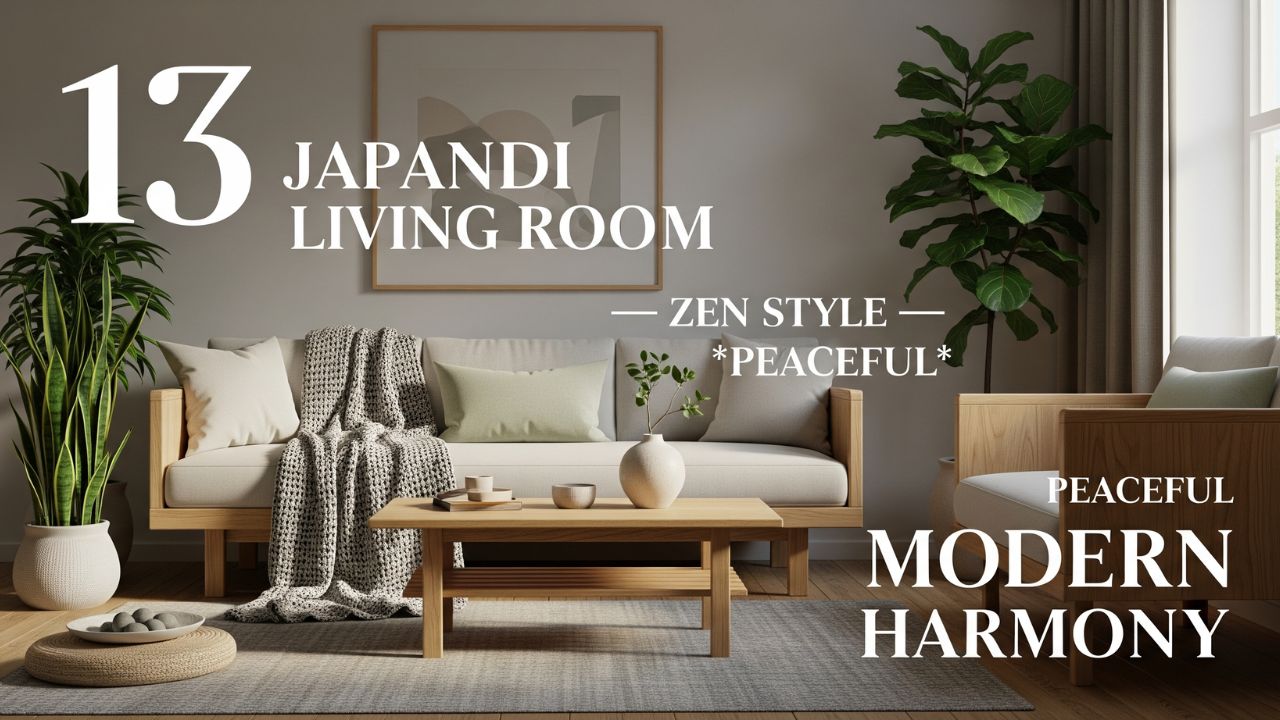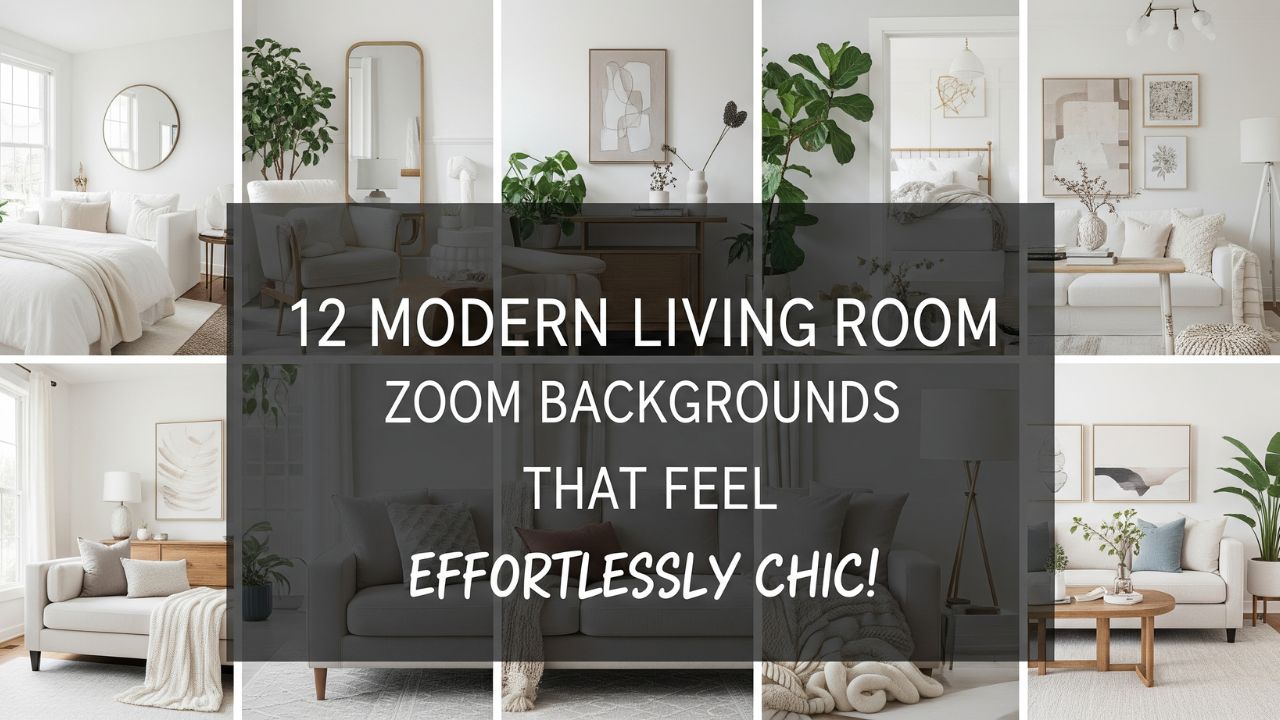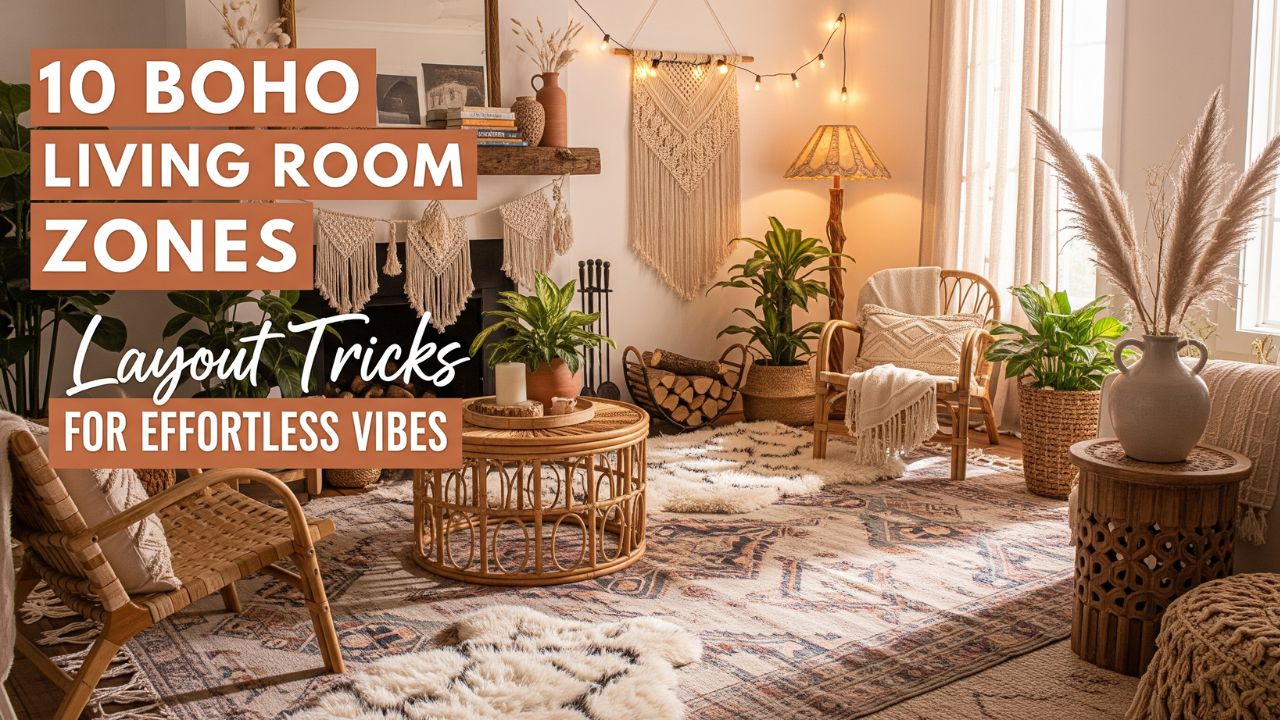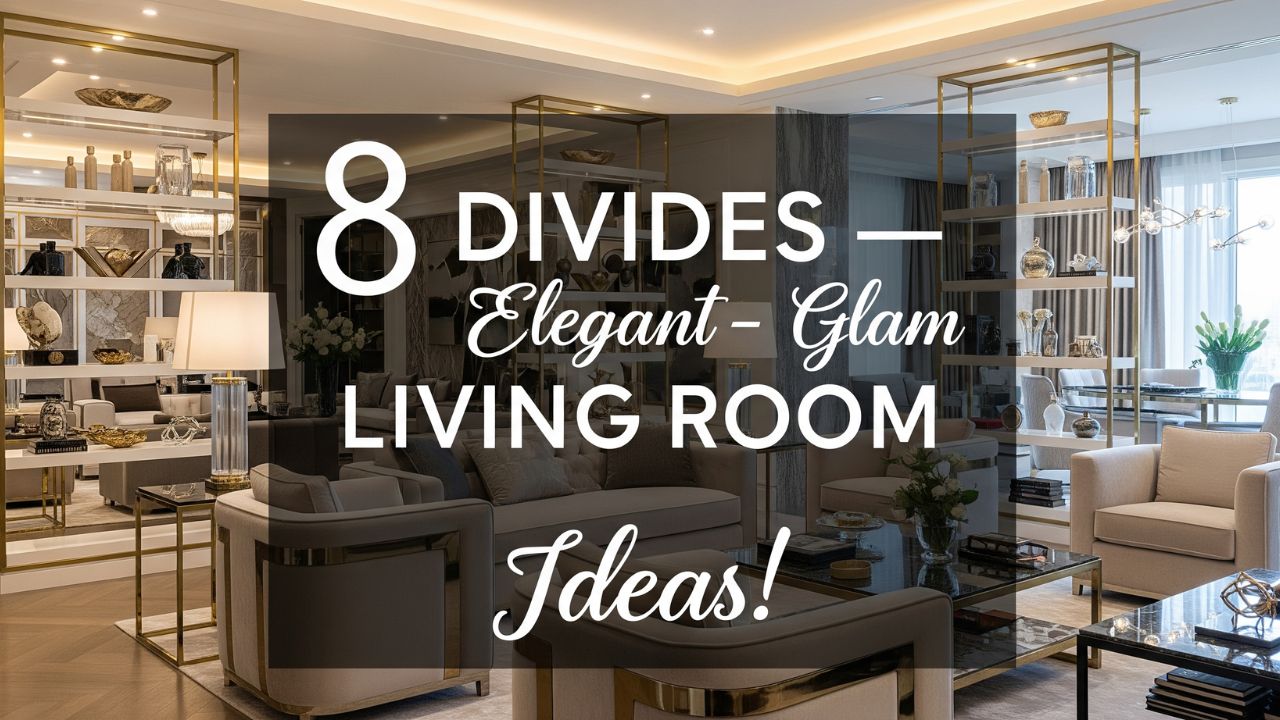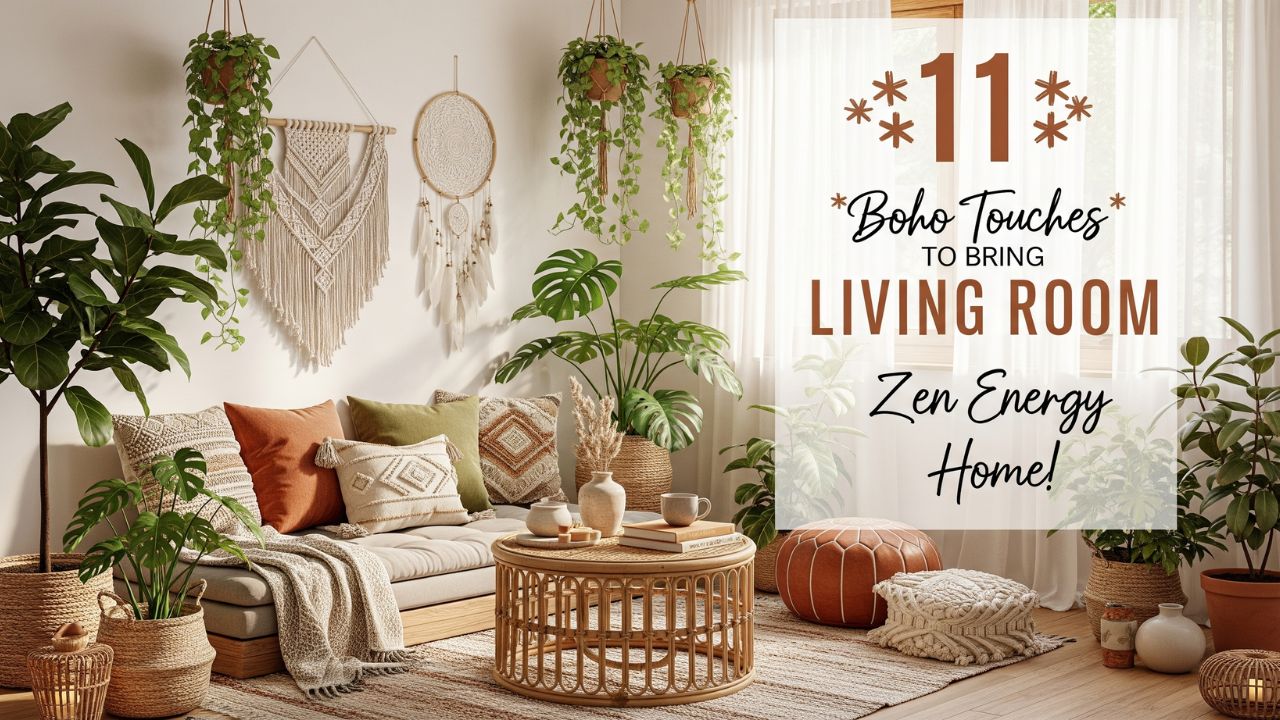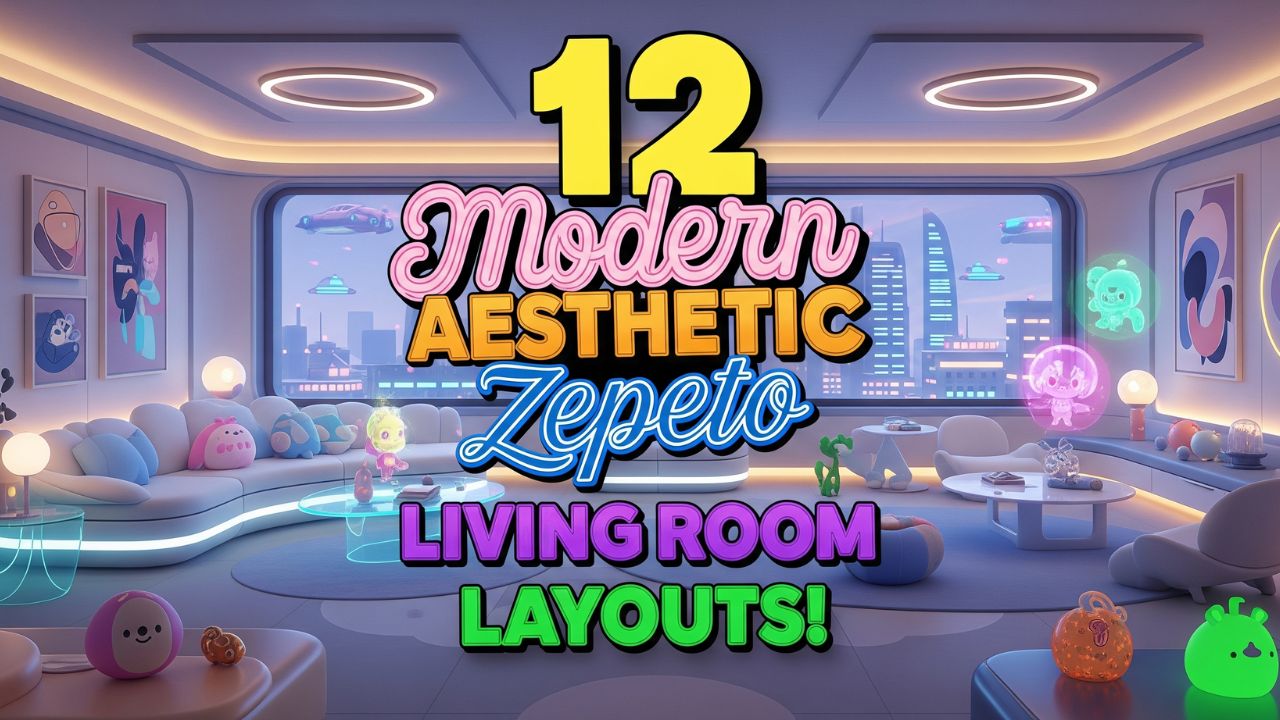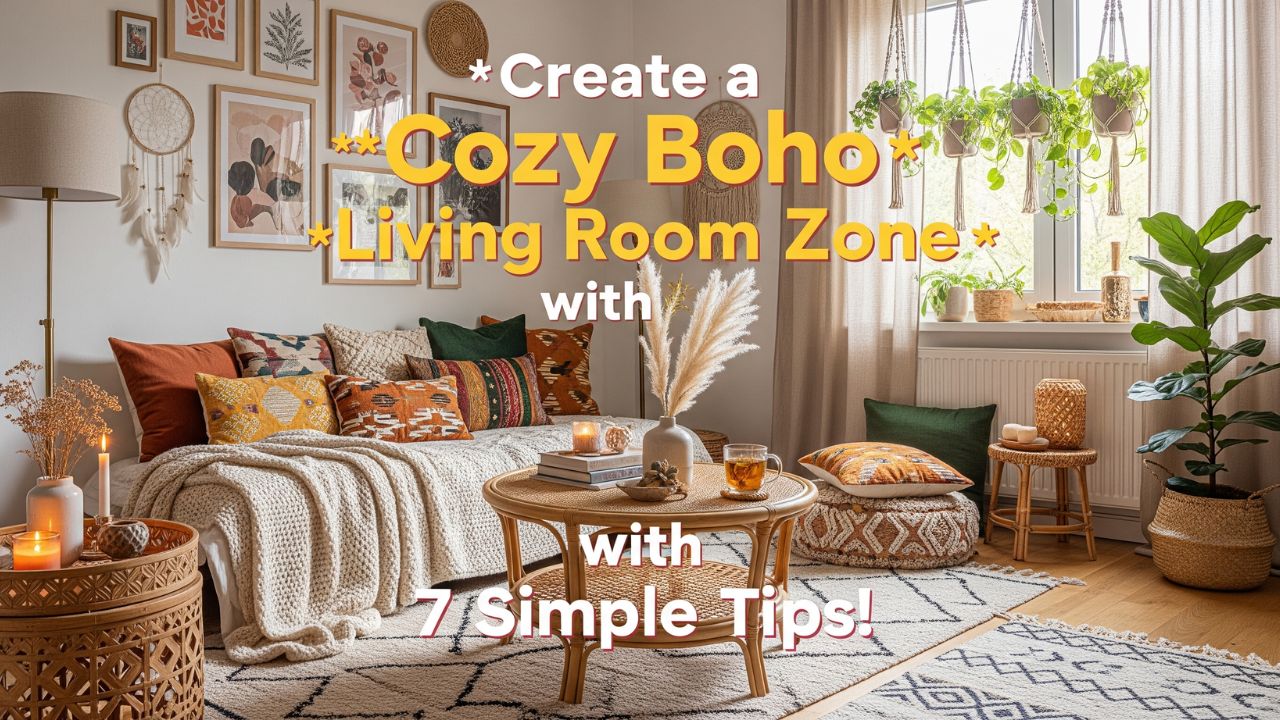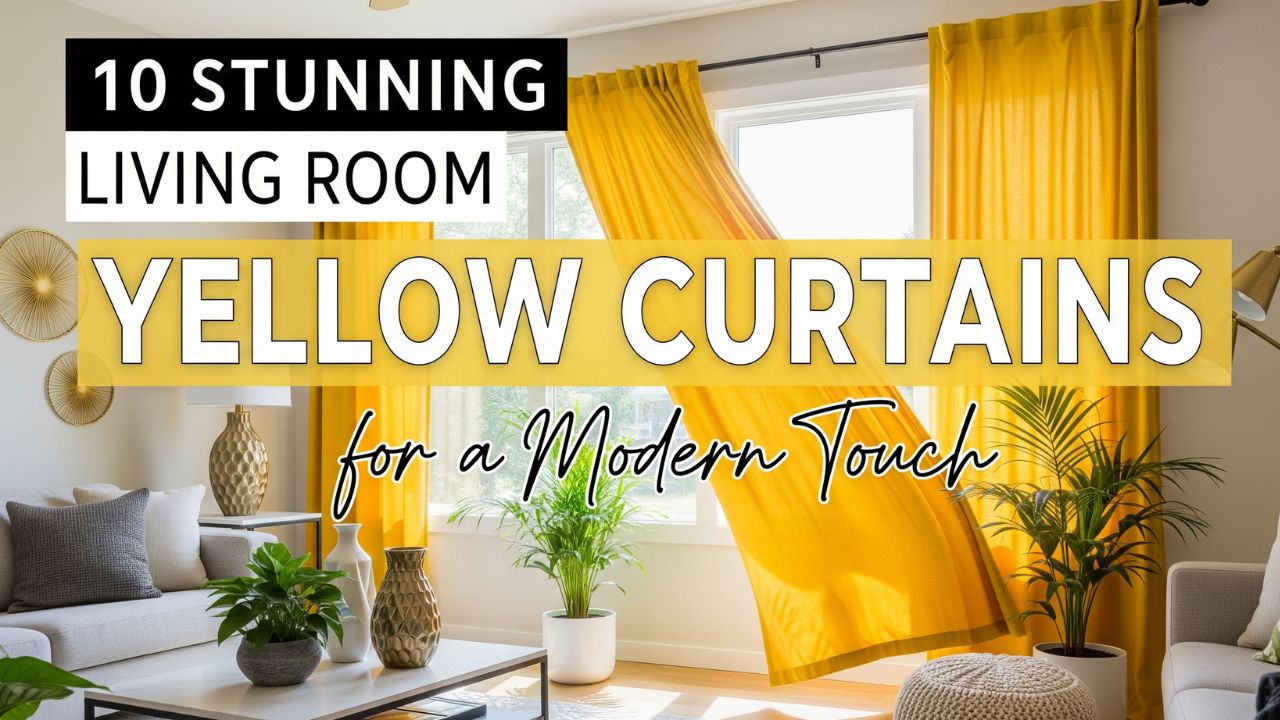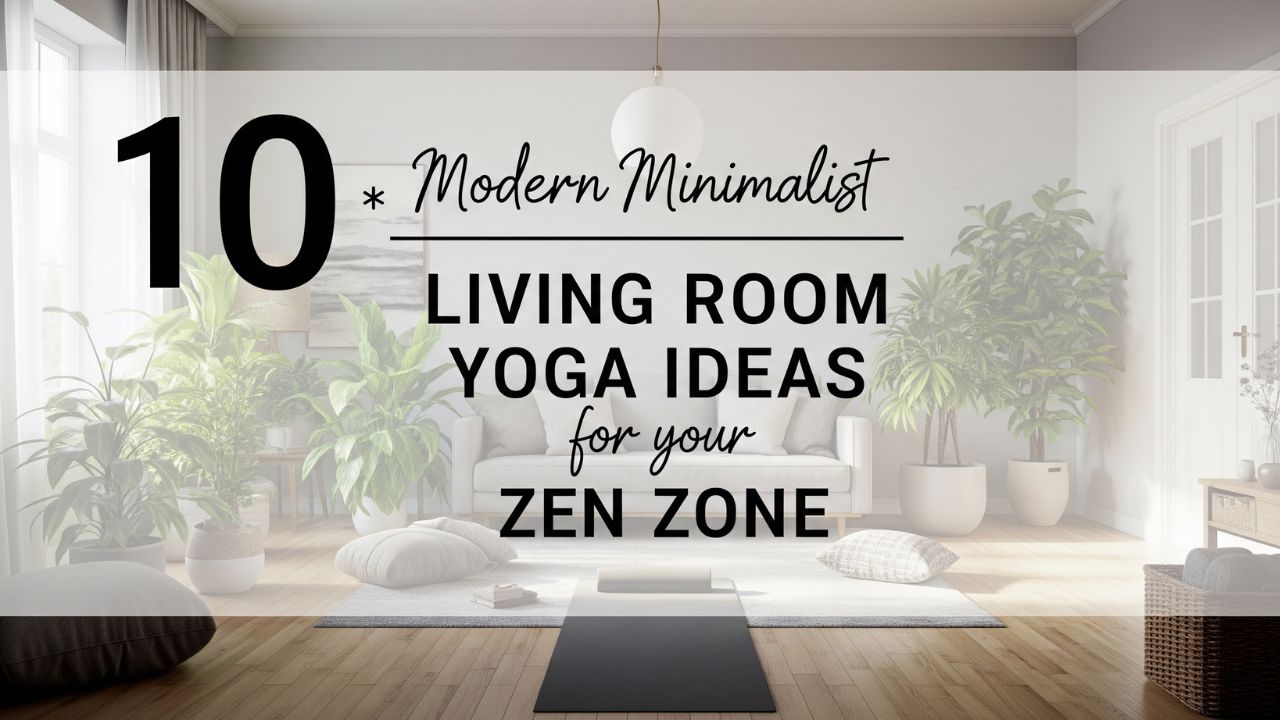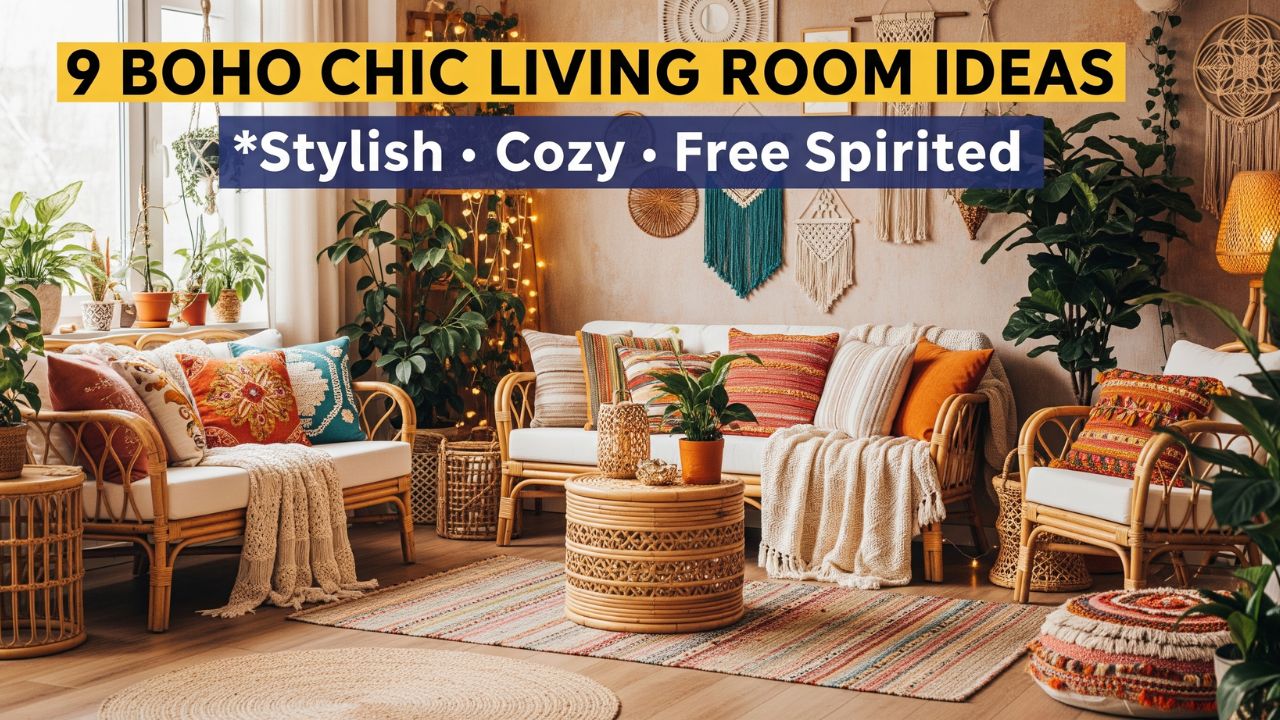Ever walked into a room and instantly felt calm, creative, and connected — like the air itself has a rhythm? That’s the magic of a Boho-inspired living room.
It’s not about having the most expensive furniture or curated pieces; it’s about crafting zones of flow that breathe comfort and character. A Bohemian space thrives on personality, layering, and intention — but ironically, it looks so natural that you’d swear it came together by accident.
Here’s the truth: a cozy, soulful Boho living room isn’t just about textiles and colors. It’s about layout logic — the art of zoning your space to create harmony between chaos and calm.
Let’s uncover 10 brilliant Boho living room layout tricks that make any home feel effortlessly grounded, warm, and free-spirited.
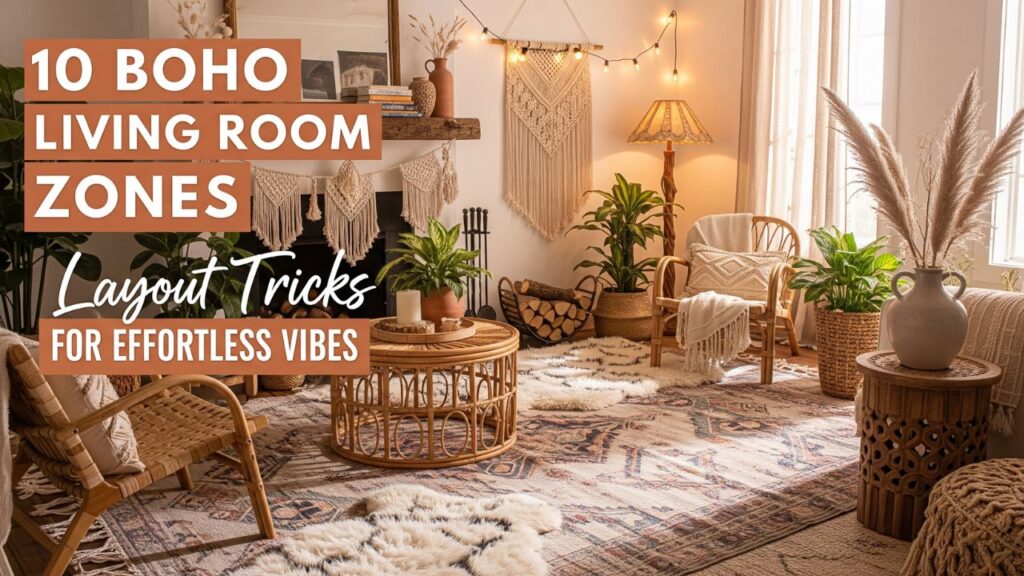
Table of Contents
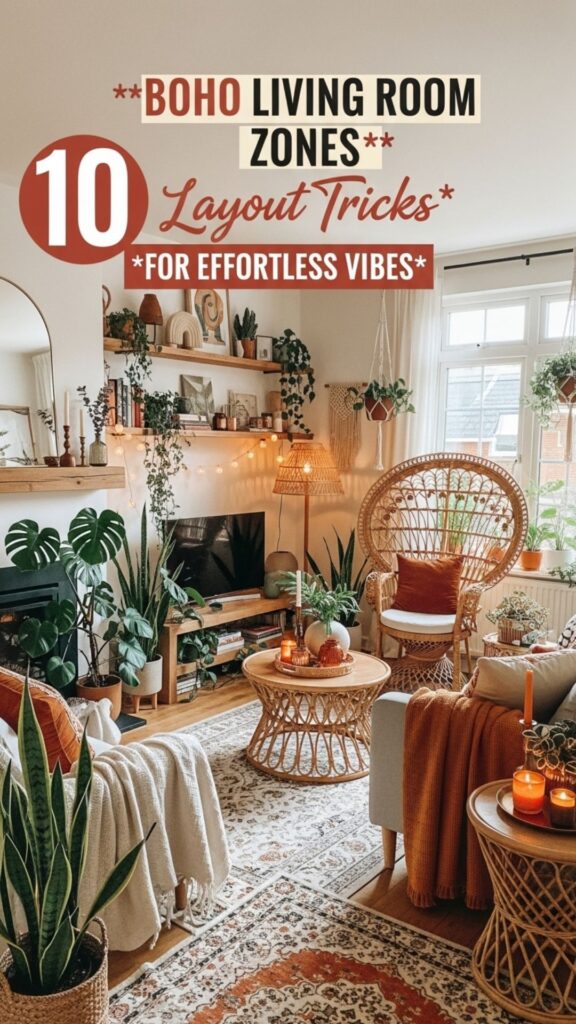
10 Boho Living Room Zones Layout Tricks
1. The Floating Sofa Rule
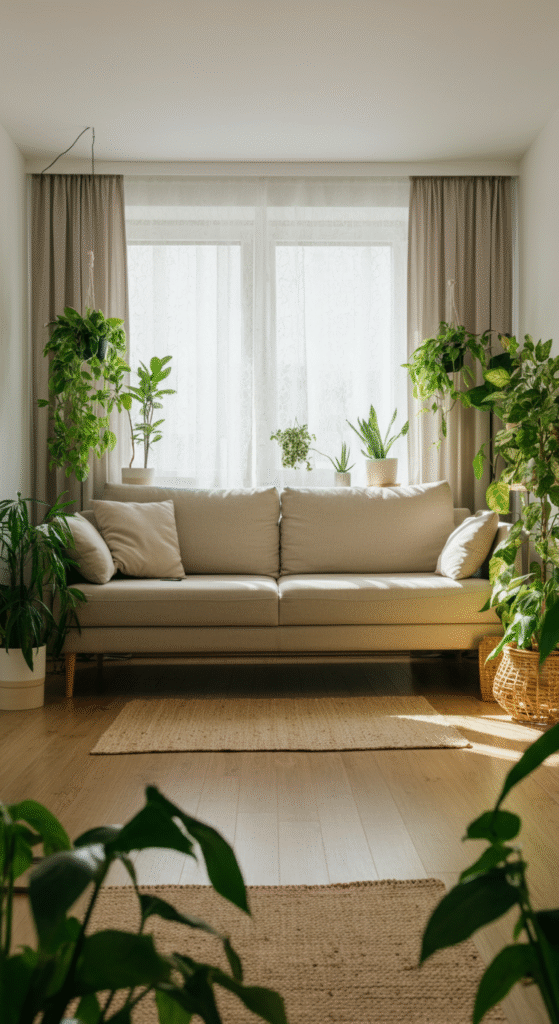
The first mistake many people make in their living room? Pushing the sofa against the wall.
In a Boho-style room, the energy thrives in open flow. Try “floating” your sofa — placing it slightly away from the wall to carve out breathing room. This simple shift creates a natural zone where conversation feels more intimate, and your décor elements can breathe.
Do you know? Interior stylists say that even a few inches between furniture and walls can psychologically expand your space. It makes a small room feel bigger and more “designed.”
If your living room opens to other areas, use the back of your sofa as a gentle divider — top it with a long console table layered with plants, candles, and woven baskets for the ultimate Boho charm.
2. The Layered Lounge Corner
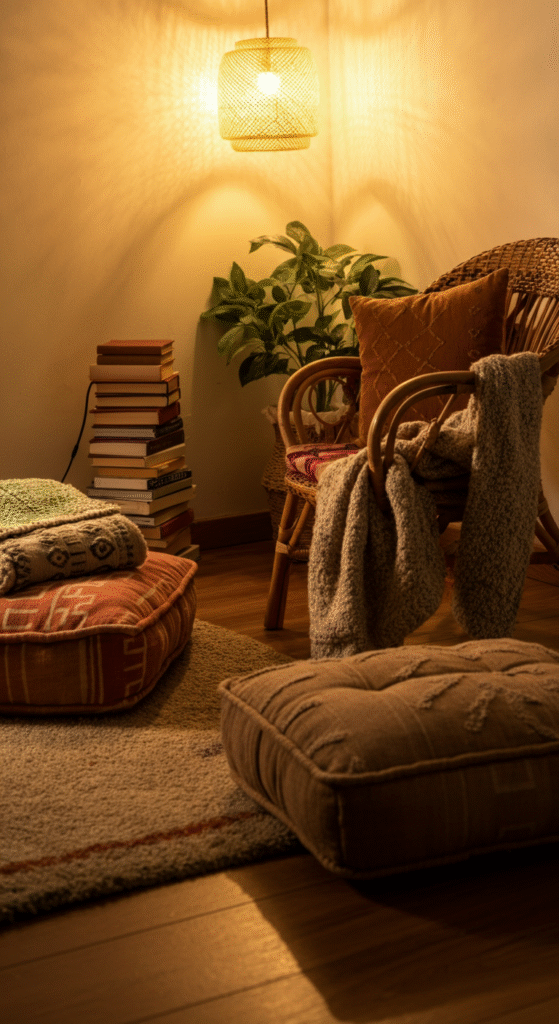
No Boho living room is complete without a lounging nook — that dreamy corner made for reading, journaling, or simply existing.
Start with a low, comfortable base — think a rattan chair, pouf, or floor mattress stacked with pillows. Add a soft rug beneath it, then layer throws and cushions in mixed textures: velvet, macramé, linen, and knits.
To define the zone, anchor it with a floor lamp or a large leafy plant that rises vertically.
Interesting fact: The Bohemian aesthetic draws heavily from the 1960s counterculture, where “low living” (literally sitting close to the floor) symbolized freedom and grounded energy.
3. The Plant Cluster Zone
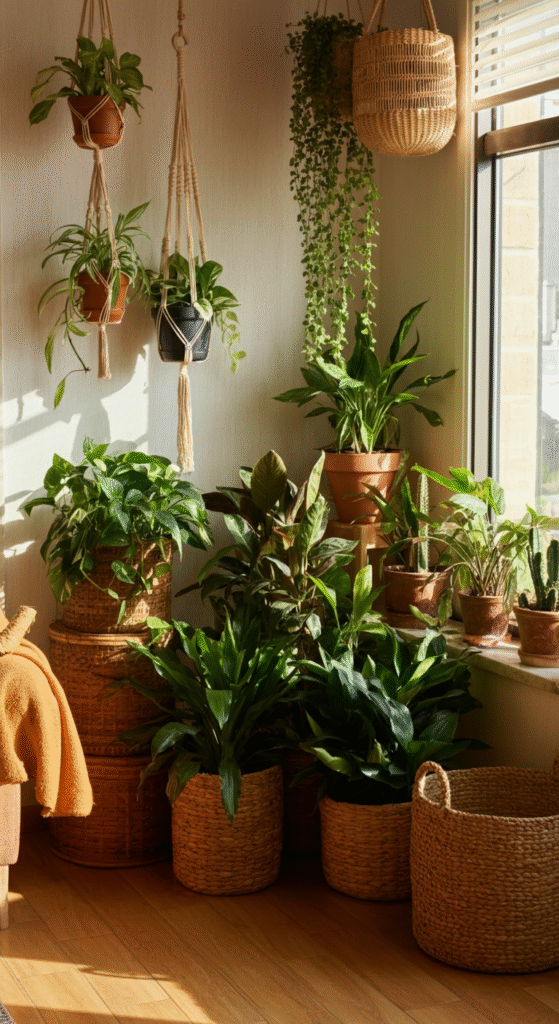
Plants are the lungs of a Boho space. Instead of scattering them randomly, create intentional “plant zones” that add structure and serenity.
Group plants in threes or fives for natural balance — combining tall leafy varieties like fiddle leaf figs with trailing pothos or string of pearls. Use stands, macramé hangers, and layered shelves for height variety.
Position your cluster in a corner, near a window, or even as a visual partition between two living areas.
Myth bust: Many think Boho means messy. In truth, the best Boho rooms are layered but intentional. Every plant, basket, or lantern earns its place with purpose.
4. The Conversation Circle
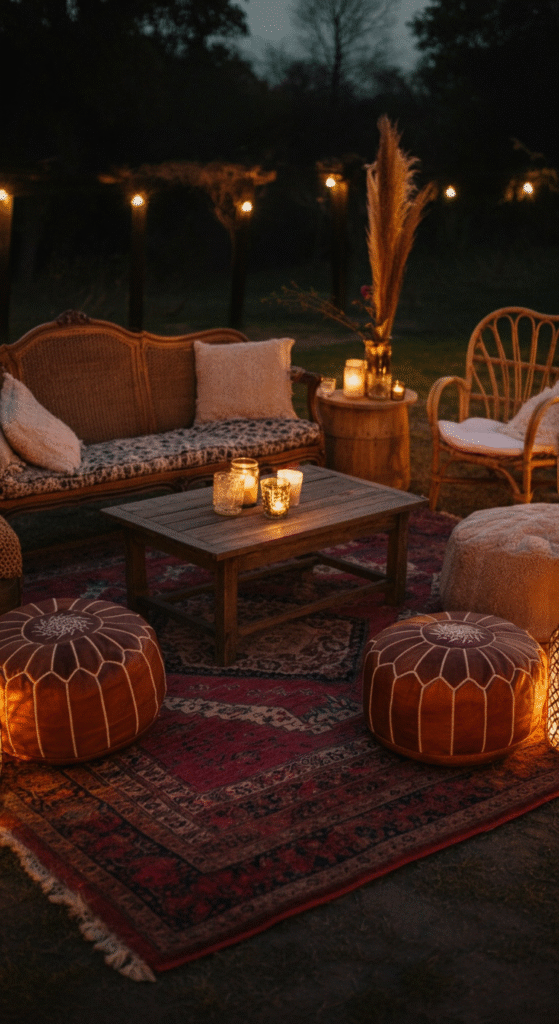
Unlike traditional living rooms that focus on the TV, Boho spaces thrive on human connection.
Create a conversation zone by arranging seating in a loose circle or semi-circle. Mix up textures — a rattan chair, a vintage loveseat, and a pouf can all coexist beautifully. Add a central coffee table or a cluster of smaller tables for organic rhythm.
If space allows, layer rugs beneath this setup to visually bind the zone together. Think jute on the bottom, a patterned Moroccan or Kilim rug on top.
Do you know? Circular layouts mimic the natural way people interact — there’s no “head” of the table or dominating position, just equal flow and eye contact.
5. The Low-Lighting Layer Trick
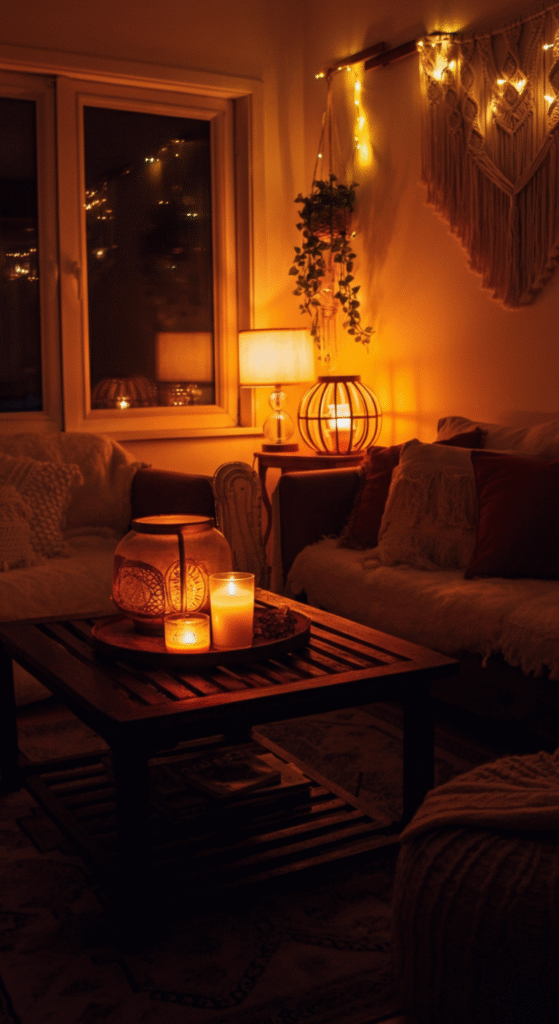
Lighting defines mood — and in Boho décor, harsh ceiling lights are the enemy.
Instead, build a layered lighting layout: a floor lamp beside the sofa, a table lamp near the reading nook, and candles scattered throughout. String lights or fairy lights woven through plants or draped across a wall add instant softness.
The key? Different light heights. Low light warms the energy, while overhead light tends to flatten it.
Interesting fact: Studies in environmental psychology reveal that people feel physically warmer in spaces with amber-toned, lower light levels — even if the temperature is the same.
6. The Rug Stacking Secret
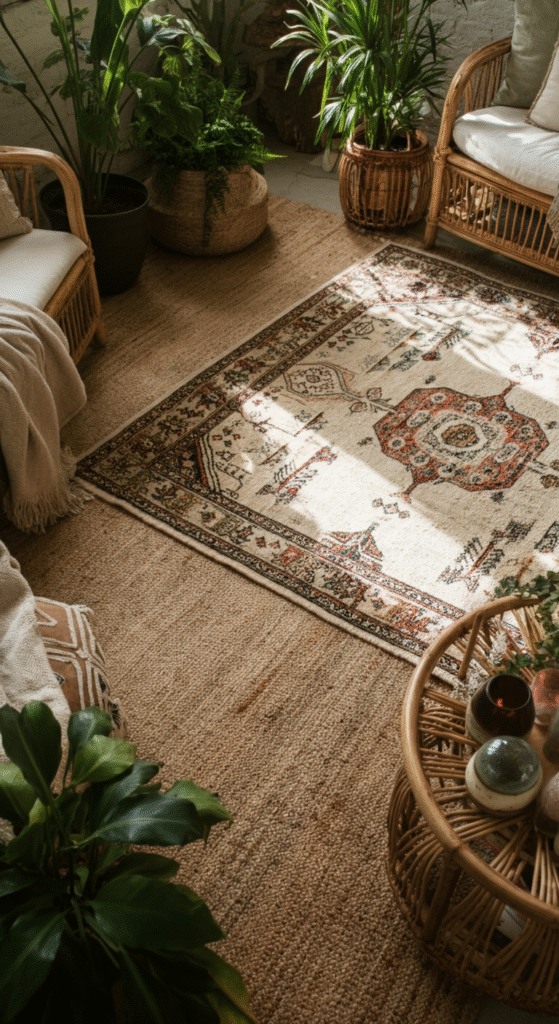
Boho living rooms are rug paradises. Rugs don’t just warm up the floor — they define zones.
Start with a large neutral rug to anchor the space, then layer smaller, patterned rugs on top. Overlapping creates organic borders between lounging, reading, and conversation zones.
Mix materials: jute, cotton, wool, and even kilim blends. The trick is to contrast textures while keeping your color palette cohesive — earthy tones, muted blues, or sun-faded reds.
Do you know? The tradition of layered rugs comes from nomadic tribes who would stack multiple handmade rugs for insulation — today, it’s a design statement of depth and culture.
7. The Eclectic Wall Zone
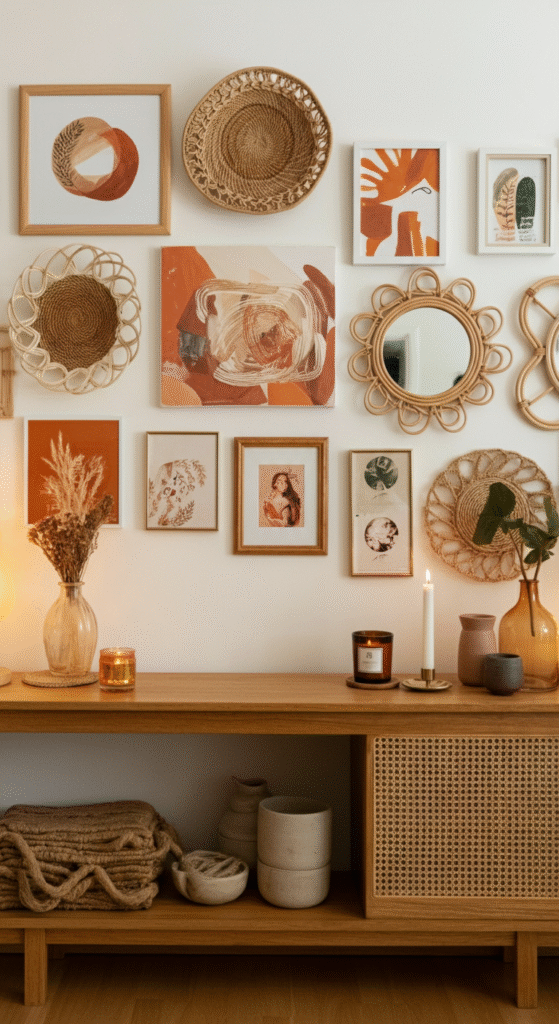
Walls are storytelling canvases in Boho design. Instead of uniform gallery walls, build a “zone” of layered expression.
Start with a large woven wall hanging or textile as the base, then add art pieces, framed photos, or mirrors around it. Let asymmetry rule — Boho style embraces imperfection.
Place a console or low cabinet below your wall art zone, styling it with ceramics, candles, and books to complete the vertical visual story.
Myth alert: Many assume Boho means “cluttered.” The real trick is curating with heart — display pieces that mean something. Every object should have a story or emotion attached.
8. The Texture Triangle Trick
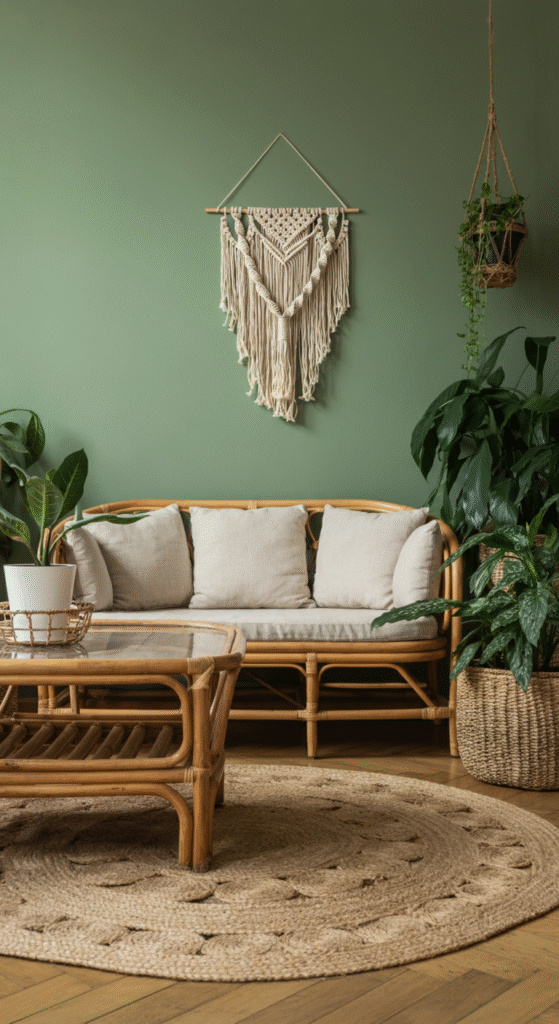
Every Boho layout thrives on texture — but to balance it visually, distribute it using the texture triangle rule.
Imagine your room from above and form invisible triangles using elements like a rattan chair, a fringe throw, and a jute rug. Each corner of your triangle adds a textural accent, creating visual flow.
This prevents all the “busy” textures from pooling in one area.
For example, if you have a macramé wall hanging on one side, balance it with a woven pouf diagonally across and a rough wood coffee table in between.
Interesting fact: Designers often use visual triangles subconsciously to balance elements — even in magazine spreads or film sets. It’s a silent symmetry that keeps chaos beautiful.
9. The Soulful Music or Scent Zone
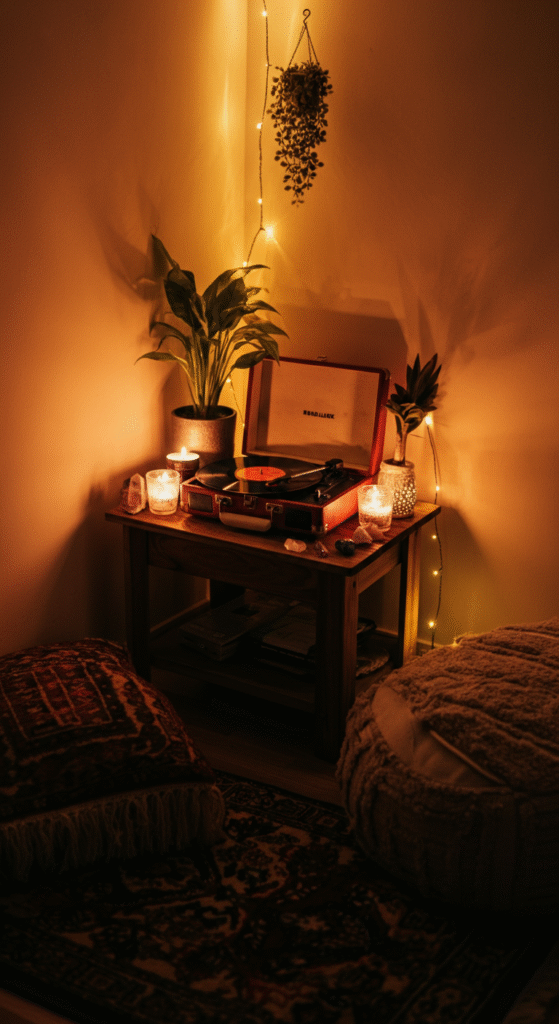
What makes Boho living truly “alive” isn’t just what you see — it’s what you feel.
Create a small sensory zone where your favorite records, incense, or essential oils live. A vintage record player on a low table, a diffuser beside crystals, or a small altar of objects that inspire mindfulness can turn an ordinary corner into a grounding ritual space.
Do you know? In traditional Bohemian homes, music and scent weren’t decoration — they were anchors of presence. Scented wood, herbs, and songs played a role in daily connection and creativity.
10. The Flexible Floor Flow
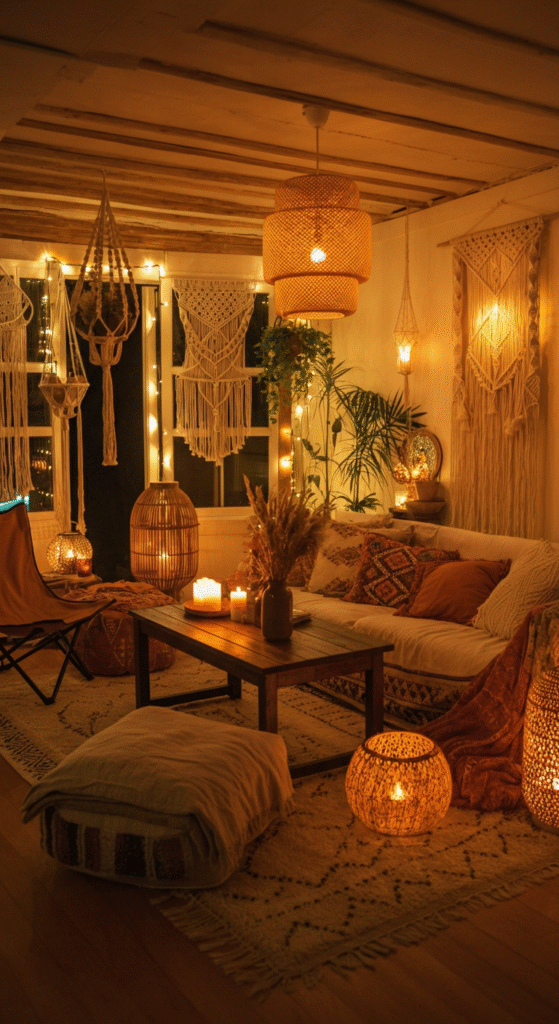
Boho rooms are dynamic — and your layout should be too.
Design your zones with flexibility in mind. Use lightweight furniture like poufs, stools, and foldable chairs that can easily move when you host or crave change. This gives your living room a “nomadic” spirit.
Keep clear walking paths between zones, allowing flow from the entryway to the windows. Remember, Boho energy is never boxed in — it breathes, shifts, and evolves with you.
Interesting fact: Feng Shui principles — though not Boho-specific — align beautifully with this idea: flow equals energy, and blocked pathways equal stagnation.
Conclusion: Let Your Space Tell Its Own Story
A Boho living room isn’t about perfection — it’s about presence. It’s the layered textiles, the imperfect pottery, the half-read book, and the morning light pouring across mismatched cushions.
When you zone your space with intention — floating furniture, layered textures, thoughtful lighting, and open flow — you don’t just design a room; you invite life in.
Every corner whispers a story, every scent carries memory, and every texture reflects a mood.
Remember: effortless isn’t the absence of design — it’s the mastery of comfort and chaos living in harmony.
So go ahead — rearrange, re-layer, and rediscover the rhythm of your home. Because your Boho living room should feel like you: untamed, warm, and wonderfully alive.
Frequently Asked Questions (FAQs)
How do I make my living room look Boho on a budget?
Use what you already have — layer throws, mix textures, and add thrifted or DIY décor like macramé hangings or woven baskets.
What colors work best for a Boho living room?
Earthy tones such as terracotta, sage, mustard, beige, and muted jewel hues create the best Bohemian base.
Can I mix modern and Boho styles together?
Absolutely. Pair clean-lined furniture with Boho accents like patterned rugs, plants, and textured pillows for a “modern Boho” feel.
How do I avoid making my Boho room look cluttered?
Balance is key — mix patterns and layers, but keep breathing space between zones and choose meaningful décor over quantity.
What’s the must-have element in every Boho living room?
Texture. From woven materials and layered rugs to natural wood and greenery — texture creates the cozy, effortless Boho vibe.
